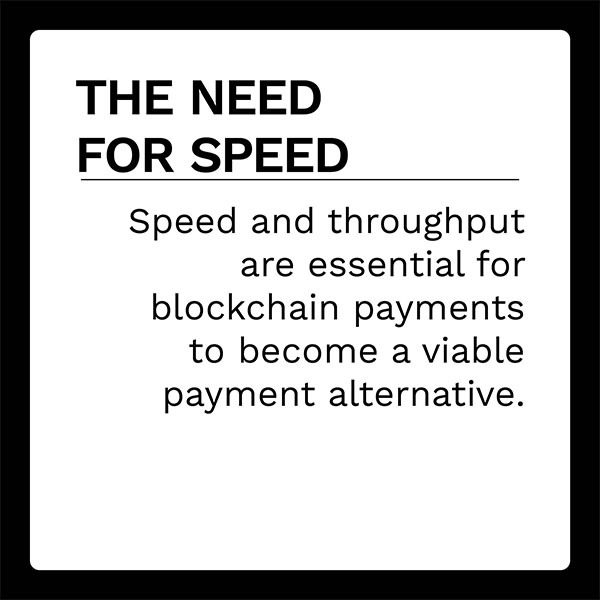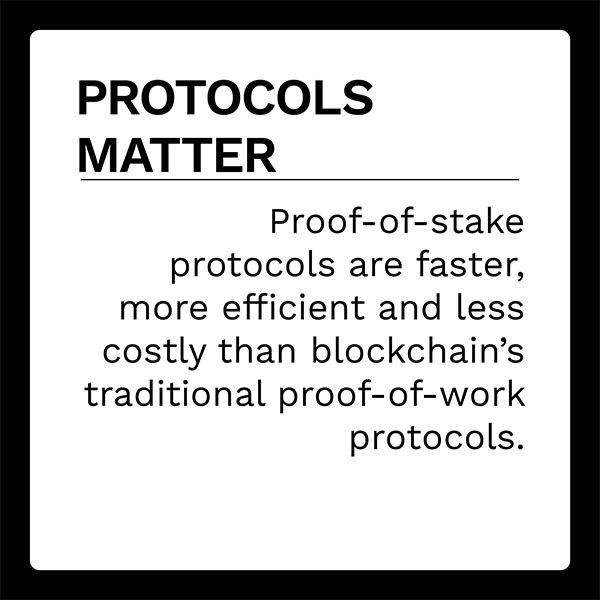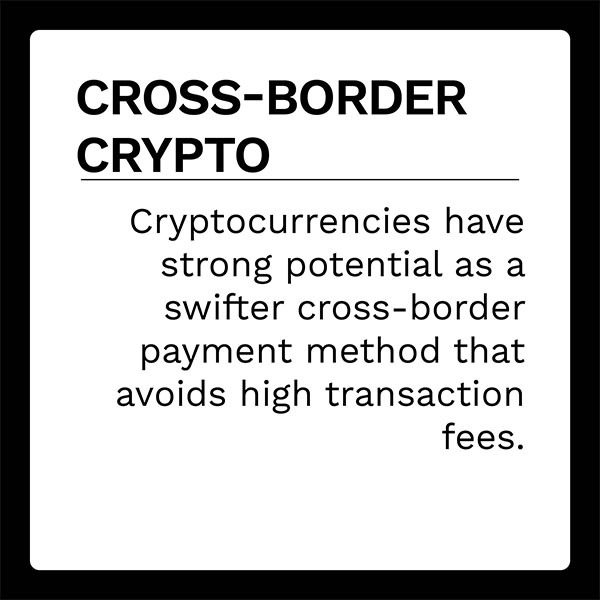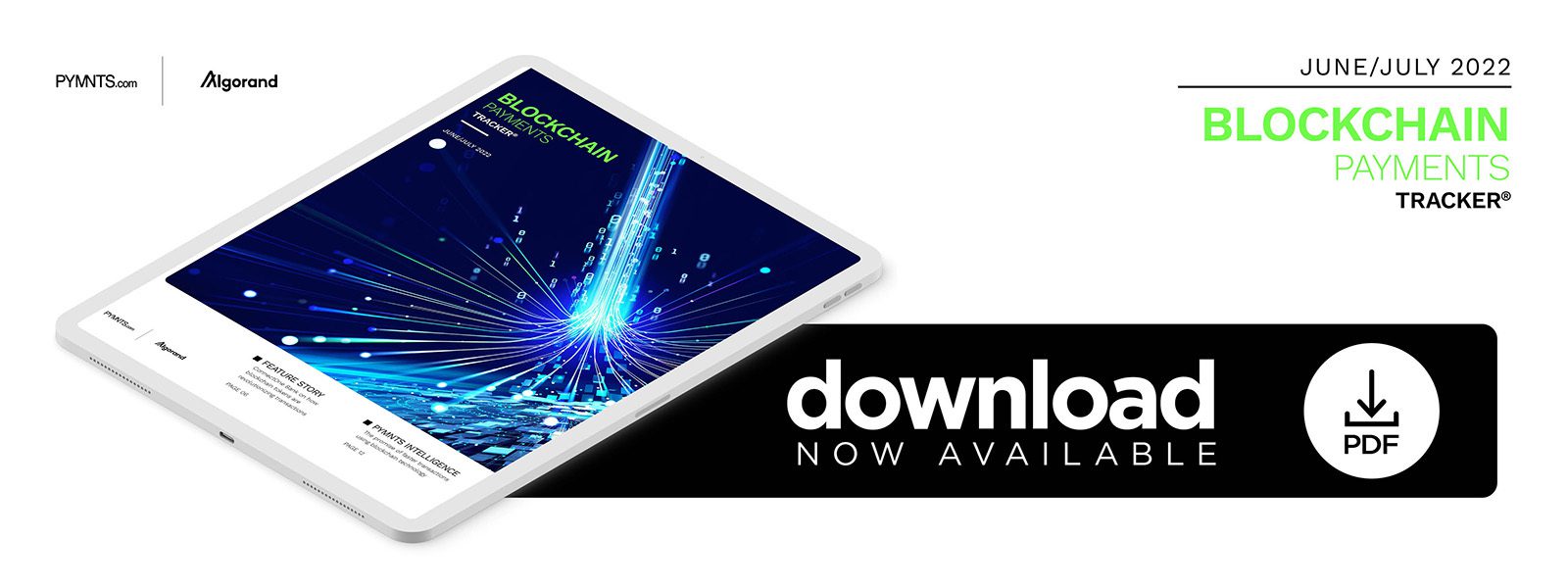ConnectOne’s Sorrentino: Blockchain Unlocks New Value for Bank Customers

While more consumers are either trading or using cryptocurrencies, blockchain payments remain in a nascent stage as a replacement for fiat currencies. Some merchants may be hesitant to deal directly in blockchain payments due to volatility in the value of some cryptocurrencies, but the benefits of a faster and more reliable payment method that removes intermediaries are driving interest. Assisting in this movement is the growing use of proof-of-stake protocols, which are faster, more efficient and, as a result, less costly than the traditional proof-of-work protocols that were the early standard for blockchain technology.
In the June/July edition of the “Blockchain Payments Tracker®,” PYMNTS examines how improvements to speed, throughput and scalability are creating added value for payors eyeing blockchain payments as a means of conducting faster, more reliable and less expensive transactions.
Around the Blockchain Payments Space
Mortgage lenders are examining the potential of accepting cryptocurrency payments, but lack of  knowledge about the underlying blockchain technology may be causing hesitation. Just 25% of lenders said they are familiar with blockchain technology and potential uses within mortgage lending, and only 20% said they have begun looking into blockchain. At the same time, 41% of lenders that have looked into blockchain said they plan to adopt it within the next four years.
knowledge about the underlying blockchain technology may be causing hesitation. Just 25% of lenders said they are familiar with blockchain technology and potential uses within mortgage lending, and only 20% said they have begun looking into blockchain. At the same time, 41% of lenders that have looked into blockchain said they plan to adopt it within the next four years.
As interest in potential use cases for blockchain technology beyond cryptocurrencies continues to grow, 30% of software developers in a recent survey said they are educating themselves about those use cases, with 12% of developers currently working on blockchain technology projects. The potentially lucrative areas of cryptocurrencies and non-fungible tokens (NFTs) are attracting the most attention from developers, meanwhile. Thirty-four percent of developers said they are learning about cryptocurrencies, and 16% said they are actively working on crypto-related projects, while 32% said they are trying to learn more about NFTs, and 11% reported active engagement with NFT-related projects.
For more on these and other developments, visit the Tracker’s News & Trends section.
The Impact of Blockchain Technology on Payments Through Tokenization
 The concept of a “token” as it exists in the world of blockchain is nothing new. A property deed or stock certificate invokes the same principles as a tokenized asset on the blockchain: something that is either intangible or too big to carry is represented by something that is simple to exchange. So long as all legal requirements are addressed, a digital token brings all the benefits of that paper form of tokenization, but with the added benefits of blockchain technology. Blockchain payments are instant, transparent and unhindered by distance, and the blockchain creates a permanent chain of custody. In this month’s Feature Story, Frank Sorrentino III, chairman and CEO at ConnectOne Bank, about the impact of blockchain technology on payments and other transactions through tokenization.
The concept of a “token” as it exists in the world of blockchain is nothing new. A property deed or stock certificate invokes the same principles as a tokenized asset on the blockchain: something that is either intangible or too big to carry is represented by something that is simple to exchange. So long as all legal requirements are addressed, a digital token brings all the benefits of that paper form of tokenization, but with the added benefits of blockchain technology. Blockchain payments are instant, transparent and unhindered by distance, and the blockchain creates a permanent chain of custody. In this month’s Feature Story, Frank Sorrentino III, chairman and CEO at ConnectOne Bank, about the impact of blockchain technology on payments and other transactions through tokenization.
PYMNTS Intelligence: How the Blockchain Drives Faster Transactions
The speed of a blockchain transaction depends on the mechanism  behind it. A consensus mechanism — such as the proof-of-work or proof-of-stake protocol — ensures that each transaction is genuine and unique. Proof-of-work has been around since the early days of blockchain technology and is the part of cryptocurrency transactions responsible for the high energy consumption commonly associated with cryptocurrency due to the complex computational processes involved. This month, PYMNTS Intelligence examines the promise of faster transactions using blockchain technology and how markets and stakeholders are responding to the benefits blockchain offers.
behind it. A consensus mechanism — such as the proof-of-work or proof-of-stake protocol — ensures that each transaction is genuine and unique. Proof-of-work has been around since the early days of blockchain technology and is the part of cryptocurrency transactions responsible for the high energy consumption commonly associated with cryptocurrency due to the complex computational processes involved. This month, PYMNTS Intelligence examines the promise of faster transactions using blockchain technology and how markets and stakeholders are responding to the benefits blockchain offers.
About the Tracker
The “Blockchain Payments Tracker®,” a PYMNTS and Algorand collaboration, examines the latest trends and developments shaping the blockchain payments space and how blockchain technology is reshaping the face of payments.
Sign up here for daily updates on all of PYMNTS’ Crypto coverage.
